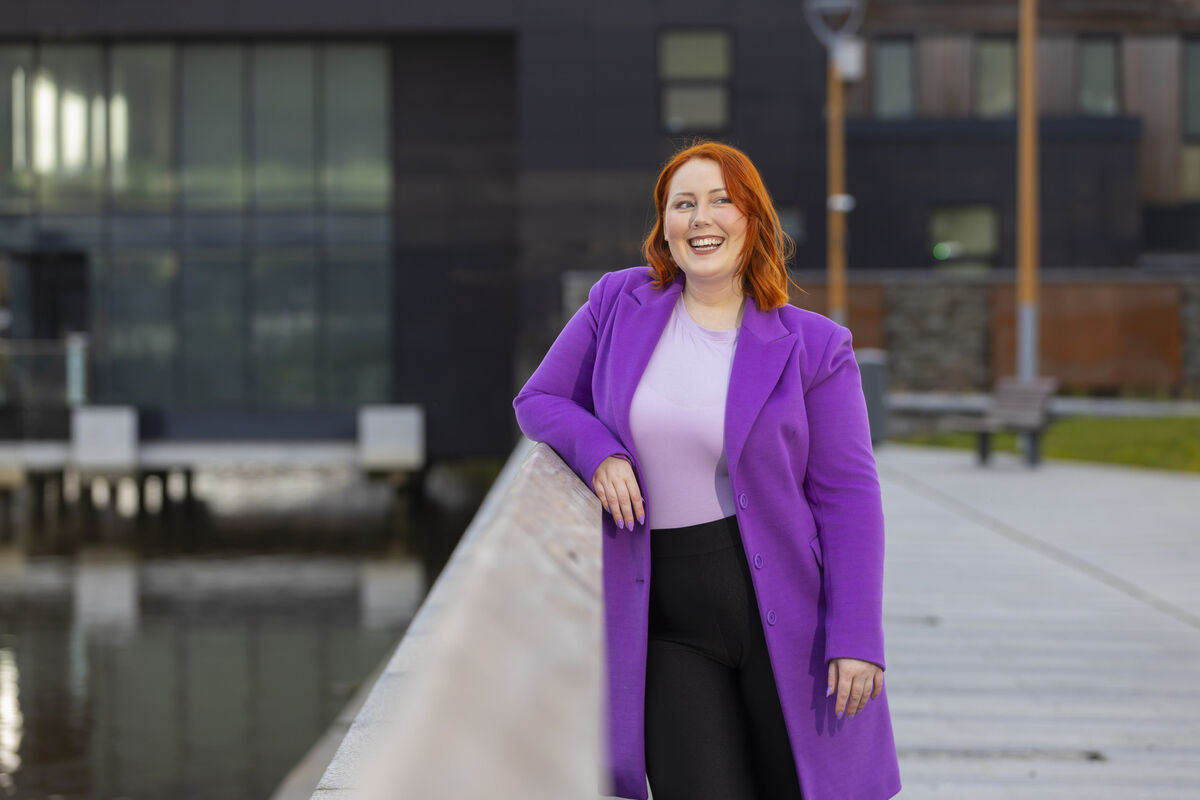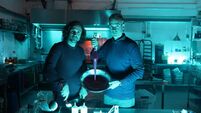'I was told incredibly painful periods were normal': Living with chronic endometriosis pain

Social media content creator Fyiya Grace, from New Ross, Wexford, had to take many sick days due to endometriosis. Photograph: Patrick Browne
Endometriosis is a chronic condition where endometrial tissue grows outside of the uterus, in areas including the ovaries and fallopian tubes. It affects about 300,000 women in Ireland.
The disease is categorised into stages, from 1-4, based on the location, extent, and depth of endometriosis implants.
The specialist registrar in obstetrics and gynaecology at the Midlands Regional Hospital Mullingar, Dr Sarah Murphy, says everyone experiences endometriosis differently.
“You could have someone with stage 1 endometriosis who could be debilitated with pain, while someone with stage 4 may not experience any symptoms.”
The most common symptoms are crippling period pain, pain during sex, heavy or irregular periods, intense fatigue, and nausea — all of which got worse during menstruation.
“The physical symptoms of endometriosis can have a significant effect on a person’s mental health and their quality of life,” Dr Murphy says.
“It can affect their ability to attend school, to work a full-time job, it can also impact their relationships, and affect their fertility.”
Content creator Fyiya Grace, from New Ross, Wexford, has stage 3 endometriosis. She got her first period at age 10.
By 13, she began experiencing endometriosis symptoms: Heavy periods, intense cramps, nausea, and extreme fatigue.
“No one was talking about periods at that time, let alone endometriosis,” the 29-year-old says.
“I was just told these incredibly painful periods were normal and all part of being a woman.”
The symptoms took their toll, and she regularly missed school.
“There were days when I was doubled over with the pain, and I couldn’t leave my bed. Even when I did go to school, I was tired and struggled to concentrate.
“As my periods were so heavy, I was leaking through my clothes — which was hugely embarrassing.”
A recent survey of 1,500 Irish women conducted by Active Iron found that nearly three-quarters of those with endometriosis experience heavy periods. Some 87% said it affected their quality of life.
Grace was prescribed the contraceptive pill to help manage her endometriosis at 13, but it didn’t agree with her. “It seemed to enhance all my symptoms, so I had to come off it,” she says.
With prescription pain medication, supplements to help with her fatigue, and her trusty hot water bottle, Grace self-managed her condition as best she could.
“I was known as the ‘girl with the hot water bottle’ in one workplace,” she recalls.
Holding down a full-time job was difficult. “I never knew when I would have a flare-up, where I wouldn’t be able to get out of bed. I had to take a lot of sick days, which is not the impression you want to make.”
During a flare-up, she often struggled to make decisions and didn’t fully trust her thoughts.
“I couldn’t even make a decision on what I would eat for dinner,” she says.
There is no cure for endometriosis. It is a chronic condition, Dr Murphy adds.
“With the right treatment, a person’s quality of life can be improved. However, there is no permanent solution to the disease.”

By 2019, when Grace was 24, her symptoms became unmanageable. “I lost feeling entirely on one side as a result of nerve damage caused by my endometriosis. I had to walk with a walking stick for six months. At this stage, I knew I had to look at the surgical option.”
She underwent a laparoscopy in the same year.
This is the most common surgical option for those with endometriosis, and involves a surgeon making a number of incisions in the abdomen. A light and camera are directed into one incision, and the surgeon inserts surgical tools into the other incisions to remove or destroy the endometrial tissue.
Grace’s surgery took six hours, and her recovery took longer.
“On the outside, the incisions on my abdomen were tiny, but inside was a different story. My body had been overloaded with lesions and it had gone through immense trauma during the surgery.
“It took me at least a month to recover.”
Since the surgery five years ago, she has experienced relief from the intense symptoms that had characterised her life for so long.
However, now symptoms are returning. “My periods are getting longer again, up to eight or nine days, and the cramps are intensifying.”
While there is no lasting treatment, some advances are being made — particularly in diagnosing the condition.
Dr Murphy says: “We are getting better at diagnosing endometriosis using MRIs and ultrasounds, and this is a good thing. It’s easier to treat stage 1 endometriosis than stage 4. We’re also seeing growing awareness among GPs and clinicians about endometriosis, which will have a positive impact on earlier diagnosis.”
Now a self-employed content creator, Grace is building her life around her condition. Working from home allows her to better manage her symptoms, and through her social media platforms (@iamfyiya on TikTok and Instagram), she is raising awareness.
“As well as the physical symptoms, the mental side of endometriosis is so difficult,” she says. “I was so sad and lonely when I was growing up. I hope I can help young girls out there to feel less alone.”

Unlimited access. Half the price.
Try unlimited access from only €1.50 a week
Already a subscriber? Sign in
CONNECT WITH US TODAY
Be the first to know the latest news and updates

Celebrating 25 years of health and wellbeing










